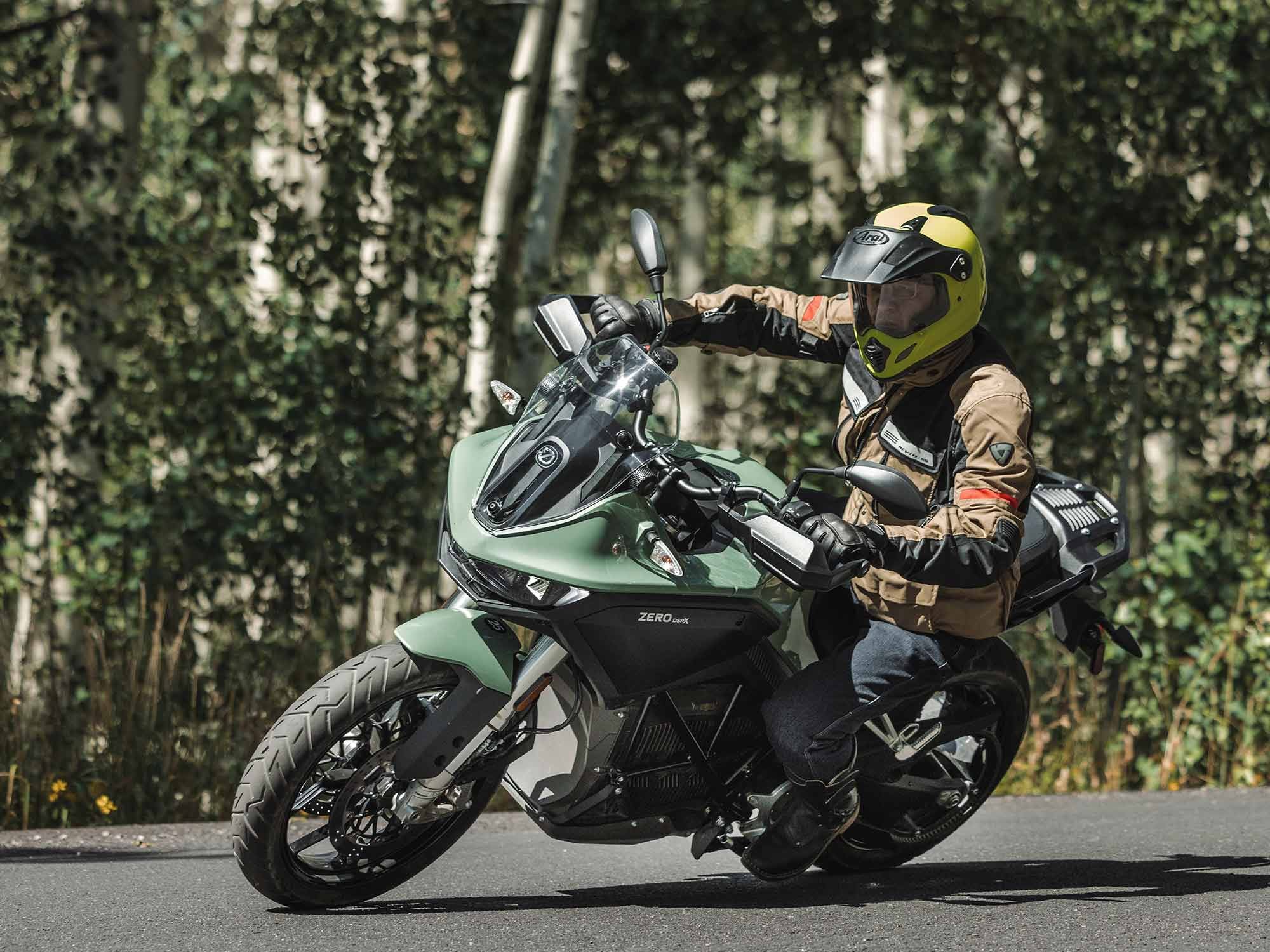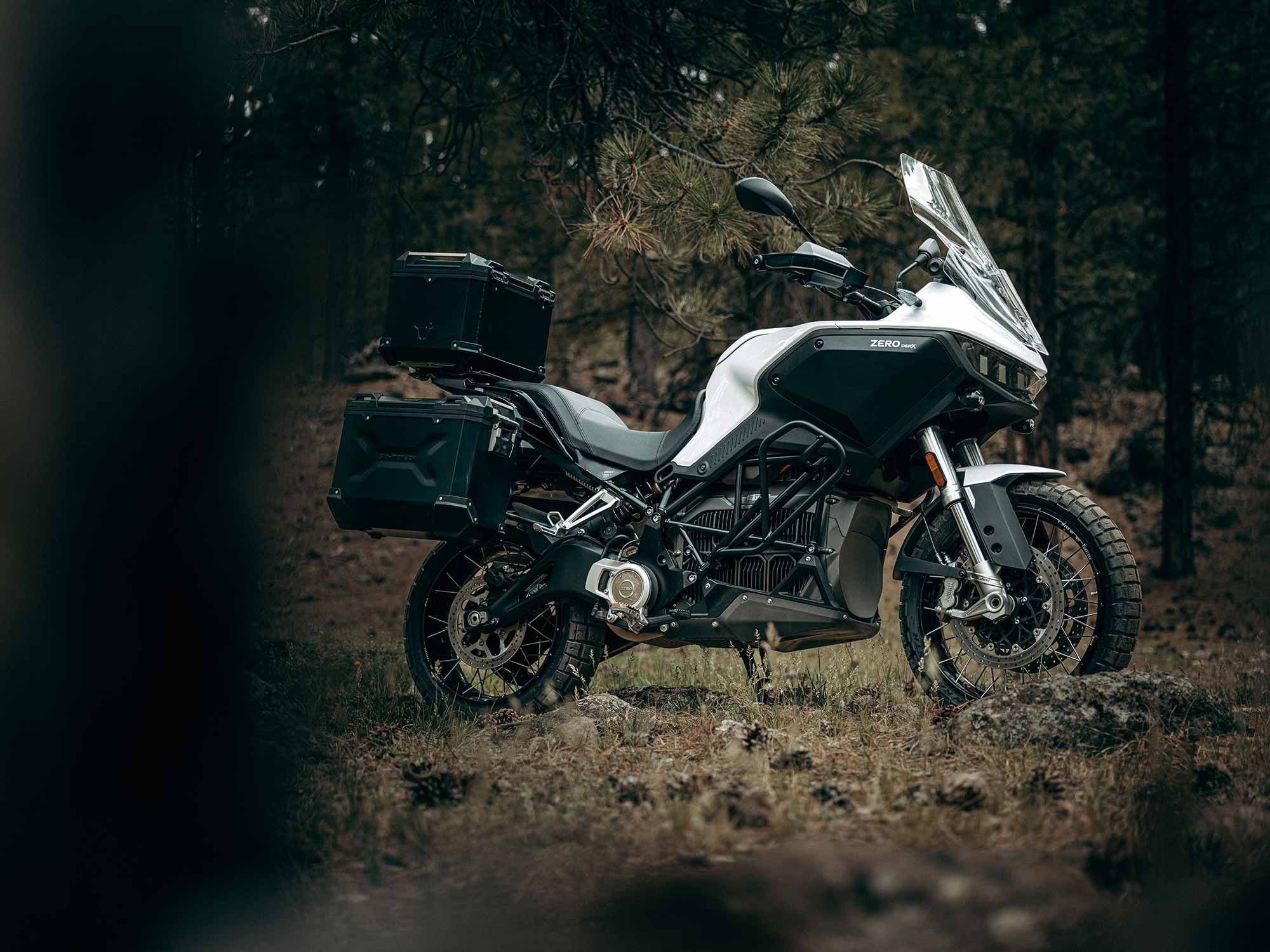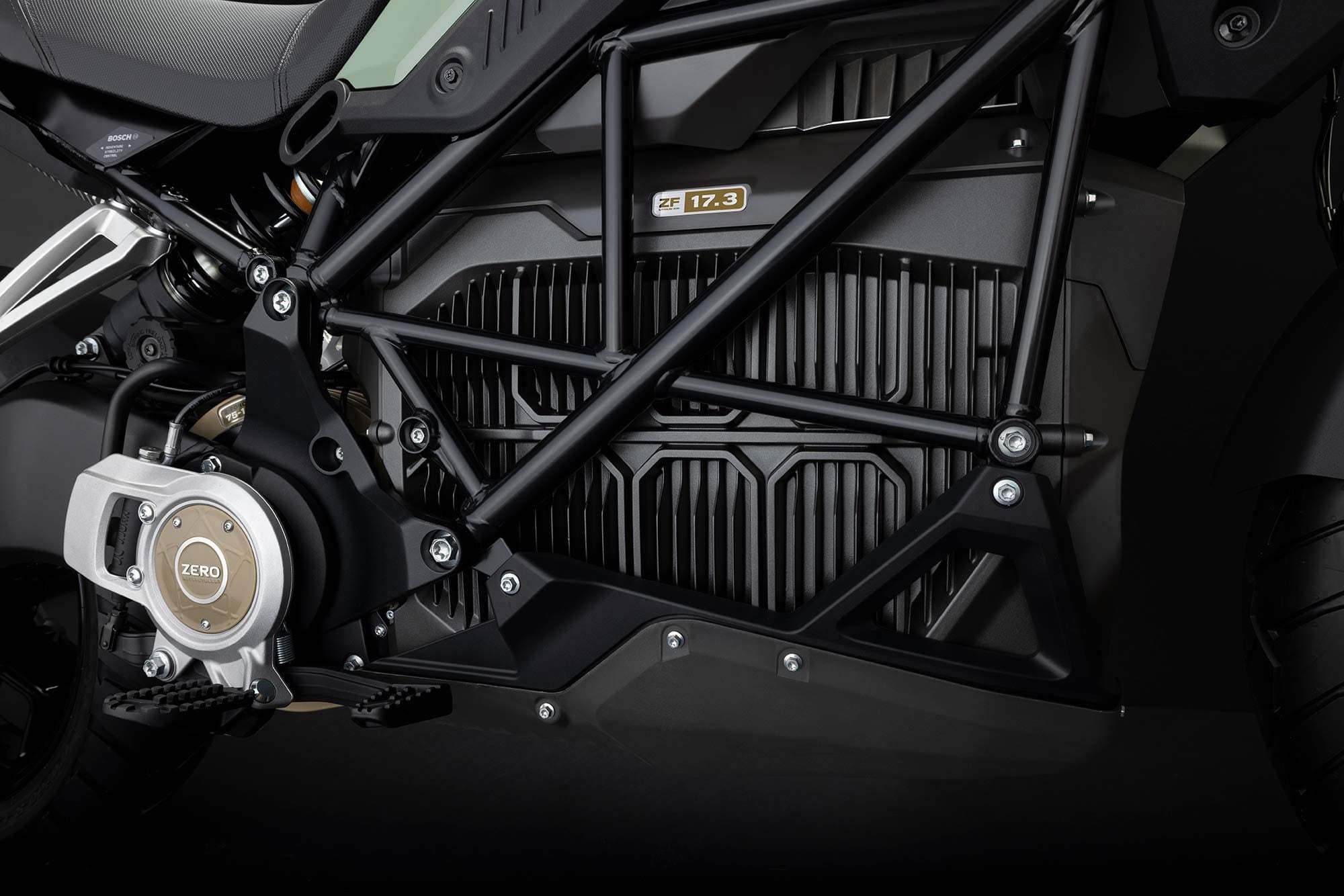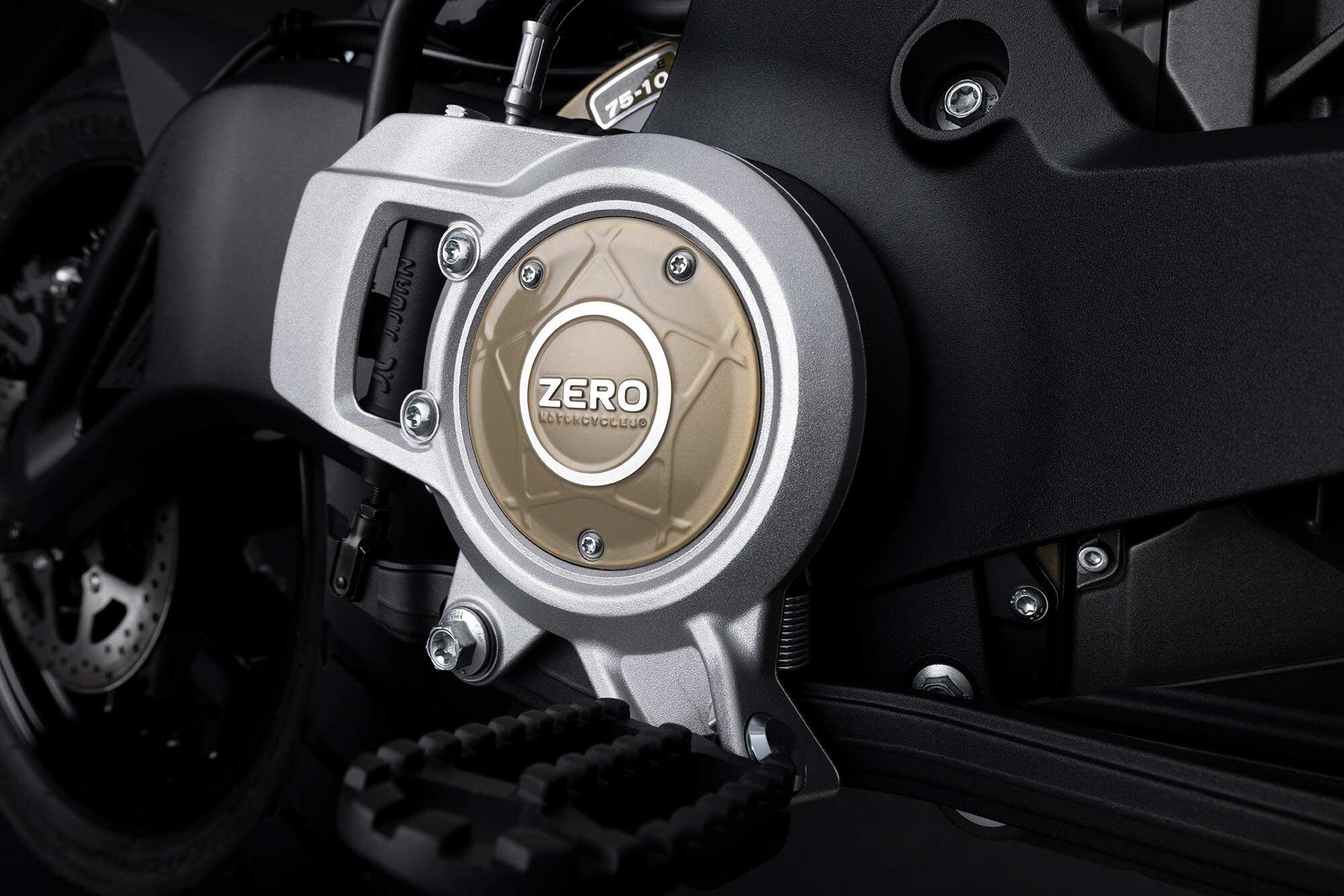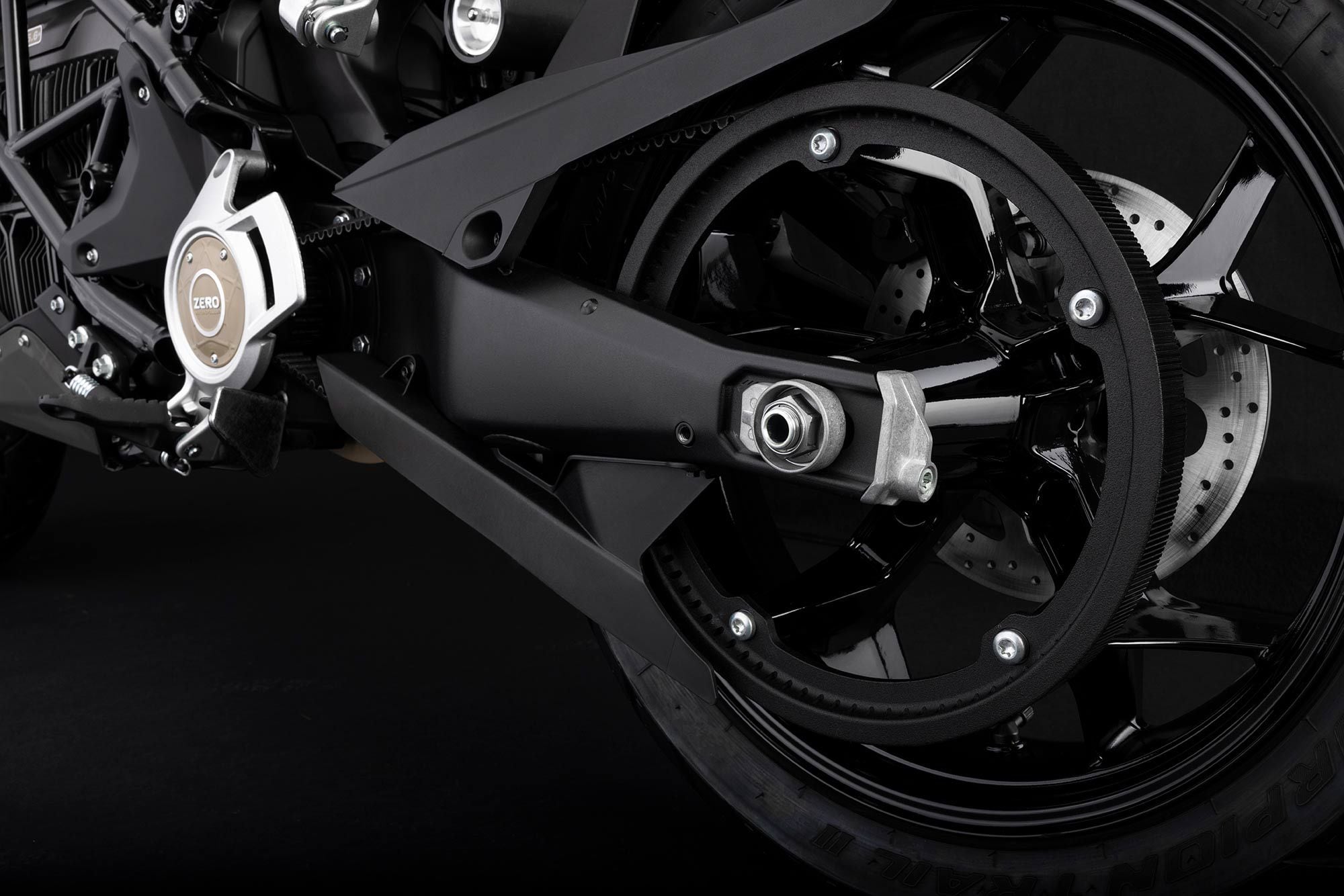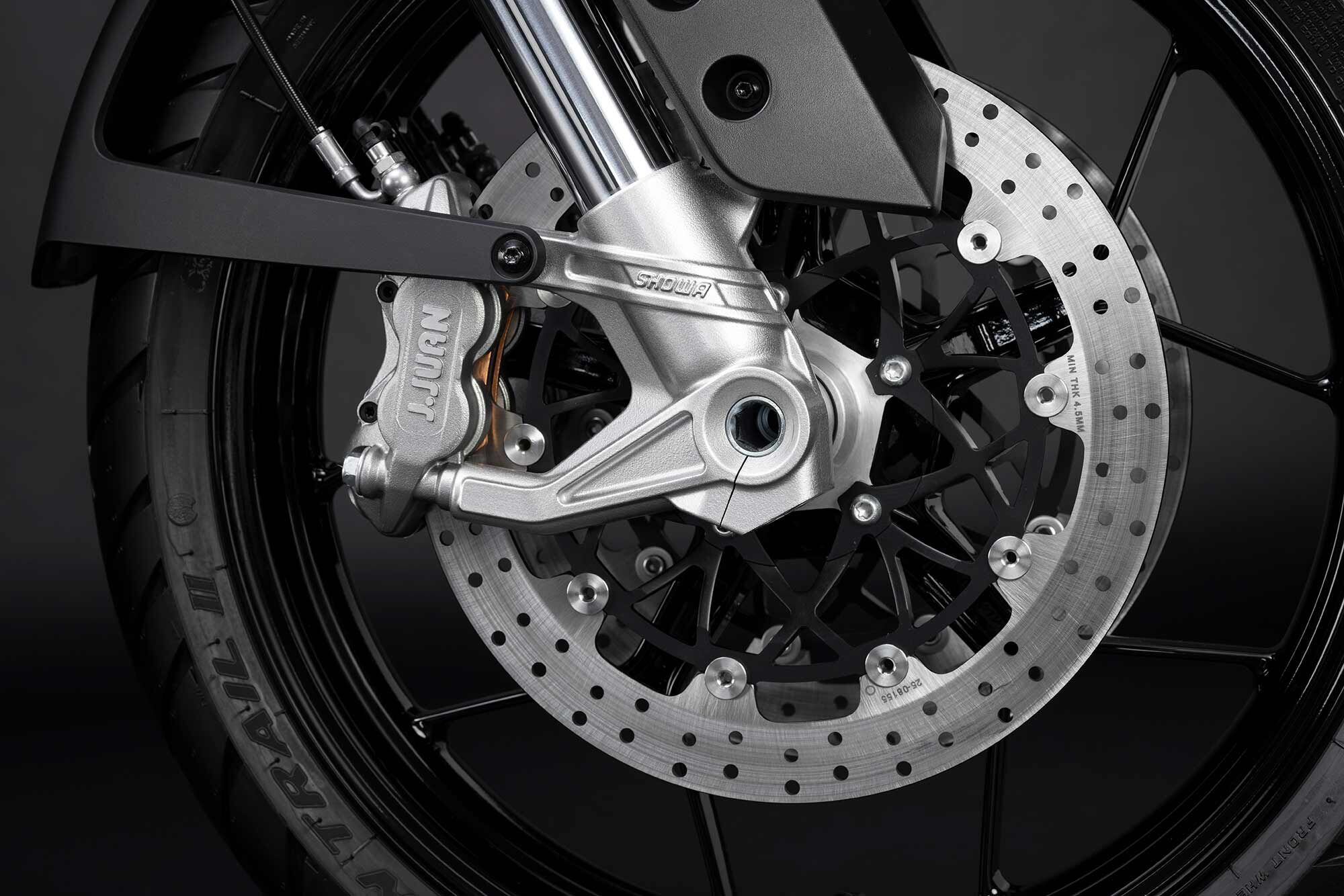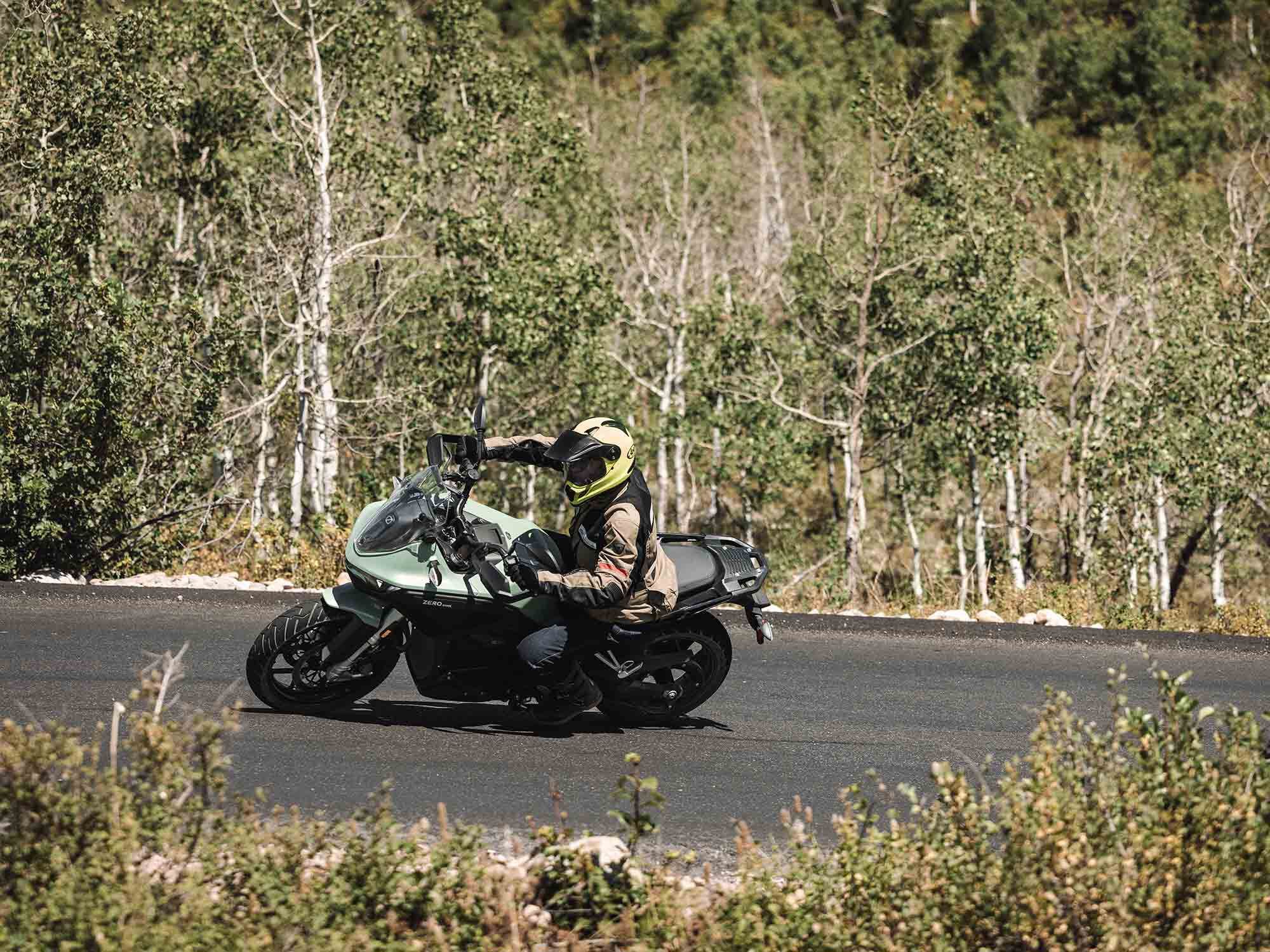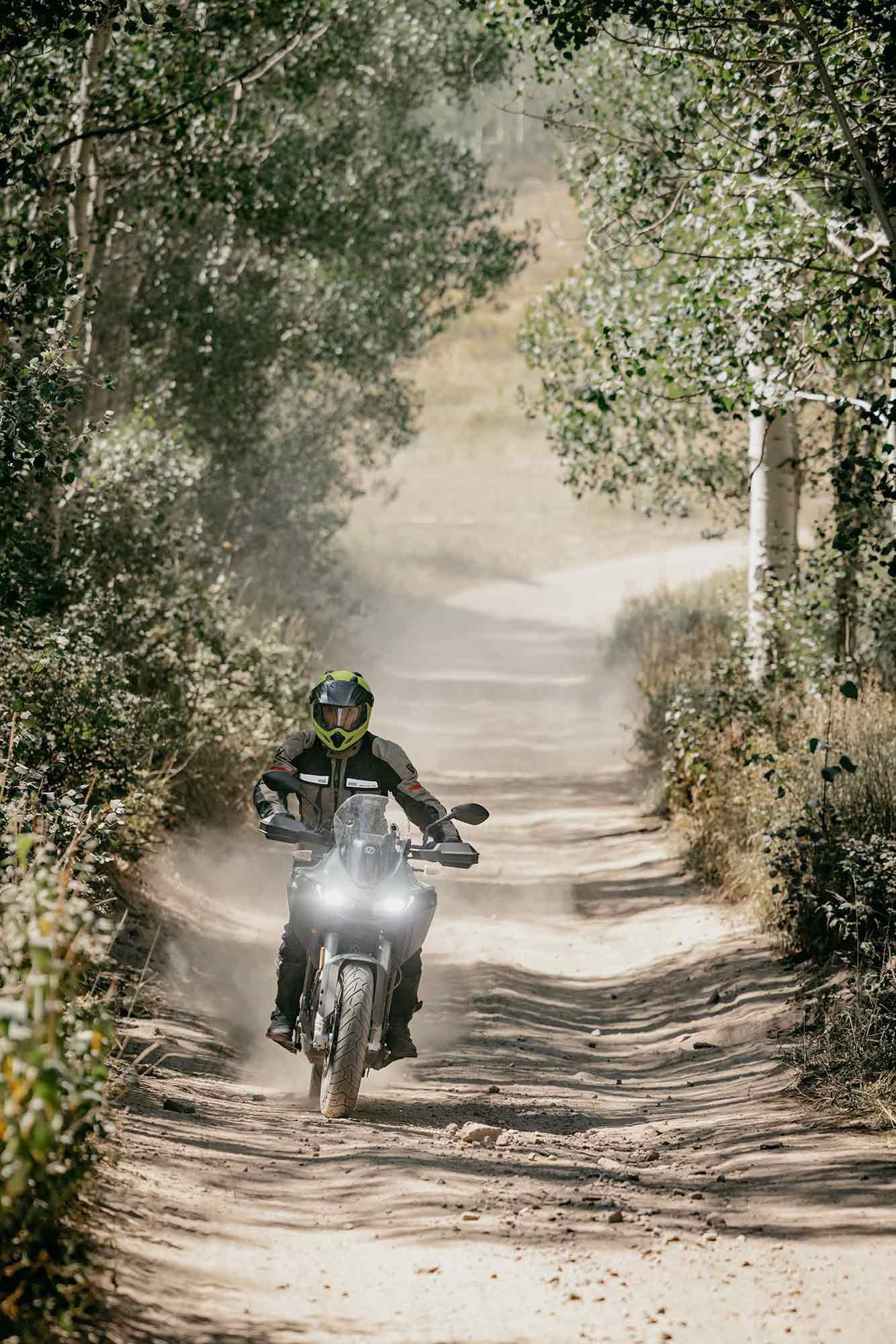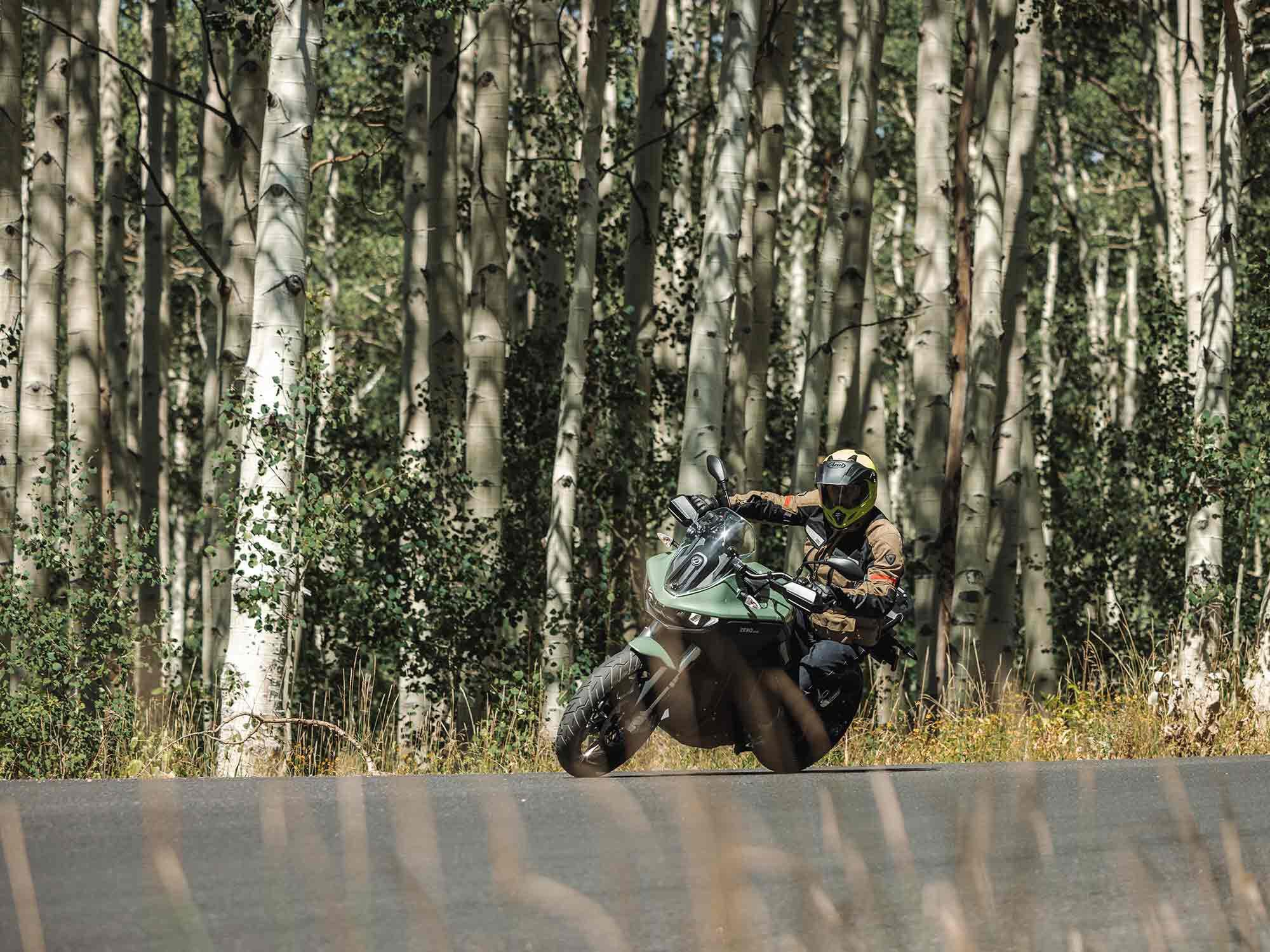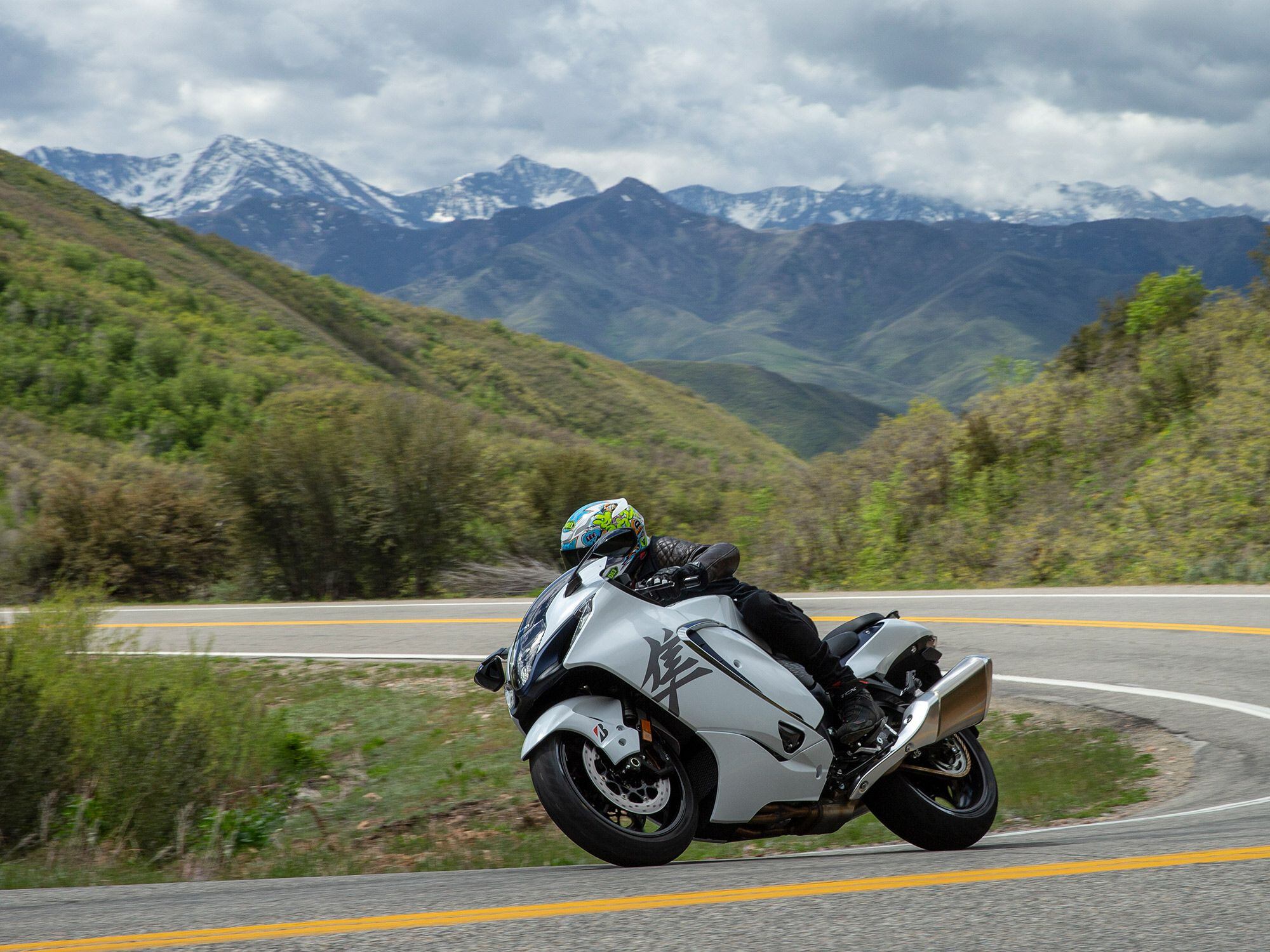Zero’s DSR/X has a 75-mile range at 70 mph. (Zero/)Zero introduced its new DSR/X, an electric adventure bike, last week in Park City, Utah. The machine is closely based on Zero’s recently released, range-topping SR/S sportbike, but almost everything has been subtly changed for on/off-road capability.
Even the battery pack is new for 2023; the new pack is built around Farasis automotive lithium-ion pouch cells originally engineered for a certain famous German automotive company. With a nominal capacity of 17.3kWh, the pack is the largest that Zero has ever offered; still, this explains why the company describes it as “adventure” bike rather than an “adventure-tourer.”
Zero’s DSR/X has the largest battery yet, increasing range—a must have for adventure riding. (Zero/)According to Zero CTO Abe Askenazi, the DSR/X with the standard battery pack can go 75 miles at 70 mph, or 13 hours and 200 trail/fire road miles at a “normal” off-road pace, or 155 miles and five-plus hours of riding when being hammered on those same routes by a true expert. This is par for the course for electric motorcycles, as aerodynamic loads at freeway speeds burn range, while the efficiency of the electric drivetrain means more miles can be covered at low speeds than with many internal combustion bikes.
Rated with a nominal capacity of 17.3kWh, the battery of the DSR/X is the largest Zero has offered. (Zero/)While loosely based on the SR/S, with a frame that looks to be used in common, almost everything has changed on the DSR/X. Its steering head has been tipped out for more rake and trail, and its frame has been strengthened for the pounding that off-road bumps and jumps hand out. The wheelbase is longer. The motor controller has moved out from under the battery to rest under the tailsection, giving the DSR/X the best ground clearance in the adventure bike world. The new Showa suspension gives 7.5 inches of travel at both ends. The motor that powers the bike is on its fifth or so significant revision since Zero introduced it a decade ago, with more stator windings in the DSR/X motor than the SR/S. The result is a torque monster capable of 166 lb.-ft., compared to 140 lb.-ft. for the sportbike motor. With the torque increase came a reduction in peak power, from 110 hp to an even 100.
More stator windings give the DSR/X’s motor more torque than the SR/S sportbike. (Zero/)Askenazi says Zero worked hard on the DSR/X ergonomics so it could be comfortable both sitting and standing. Test riders judged an early prototype too portly across the knees and seat, he said, requiring a complete redesign of the bodywork. A full range of accessories will be offered by Zero for the DSR/X, including higher and lower seats, hard luggage options, and crashbars and guards. And while the standard bike comes with cast wheels and Pirelli Scorpion Trail tires that emphasize street performance, Zero will offer as accessories spoked wheels with tubeless Pirelli Rally STR tires for more off-road capability.
Belt drive remains, using a Gates belt, something that Askenazi said was essential for low-noise performance; without an internal combustion engine to cover up chain racket, the rattle/clatter of a chain can quickly become highly irritating to a rider. The belt has been redesigned for off-road use, with stronger construction and an increase to 25mm in width from the 20mm of the SR/S. In addition, the rear sprocket was given “mud ports,” openings near where the tip of the belt teeth engage the sprocket, so mud doesn’t pack up the sprocket; this is something Gates originally developed for mountain bike belt systems. The belt is so robust, Askenazi says, that they’ve yet to break one on a prototype even with aggressive testing protocols. Still, if a rider still thinks he needs a chain, Zero will offer an accessory conversion kit.
A Gates belt drive has been redesigned for off-road usage with increased width and stronger construction. (Zero/)The DSR/X also gets its own brake system, with J.Juan calipers tailored to it, and a very special Bosch traction/ABS/stability control system with six-axis IMU. The Bosch system detects slip and/or lean angle, and the Zero motor controller can respond to a request for less power far faster than any internal combustion ECU, which has to modulate power through the relatively slow physics of internal combustion.
The Bosch system also provides stability-enhancing and almost seamless linked braking if the rider is using the front brake only; it dials in an optimum amount of rear braking for any level of front-only braking. There are settings for off-road levels of traction control (much more rear wheelspin is allowed), and off-road ABS, which continues to provide antilock control to the front wheel while allowing the rider to lock the rear. The linked brake system can be felt when trail-braking into tight corners; the addition of a little rear brake by the Bosch system adds stability and confidence without being obtrusive.
Performance is impressive from the J.Juan brakes and Bosch ABS. (Zero/)According to Zero, the DSR/X is already in production, and will be at the first dealerships by September 13. The company provided a production bike for us to ride at the Park City, Utah, introduction, on both twisty mountain roads near the ski town and on a graveled fire road going up one of the local mountains to about 8,300 feet elevation.
When sitting on the bike, the riding position is natural and comfortable, the machine’s 544 pounds (just 26 more than the SR/S) disguised by the low center of gravity from the battery and motor positioning. Acceleration is strong and deceptive, with the bike rapidly reaching 80-plus mph from a standing start, with no drama, fuss, or noise. There’s a deep whine from the belt final drive below 40 mph, but even that is soon erased by wind noise.
Handling is smooth, quick, and consistent, with the Bosch traction control keeping things on the safe side in the standard setting. It can be felt noticeably tamping down the acceleration if the throttle is rolled on quickly while leaned well over. Dialing the traction control down to Sport increases the fun quotient and allows fiercer acceleration out of corners. The overall impression, on a mountain road, is of a quick and smooth steering bike with impressive acceleration and equally impressive brakes.
Handling is quick and predictable on the Zero DSR/X on the road. (Zero/)On a bumpy, loosely-graveled fire road, the DSR/X performs as well as you might expect from its weight and tires; perhaps a little better than that, not unlike a Ducati Multistrada. The Showa suspension gives a controlled and smooth ride; it never came close to bottoming, but it wouldn’t be expected to on such a road. Handling remains confidence-inspiring, and the traction control on off-road settings allows enough wheelspin to steer the bike, at least a little, before it damps down the fun. The off-road ABS returns full control of the rear brake to the rider while still keeping the front from locking; it was a welcome safety edge on a road that had some noticeably low-traction sections.
Controlled damping from the Showa suspension inspires confidence off-road. (Zero/)The overall sense, on road or off, is of impressive refinement, smooth acceleration, of stability and quietness. This is certainly the most refined Zero motorcycle yet, and makes a convincing case for electric motorcycles. While the range may mean it’s not yet an adventure-tourer, it’s a hell of a commuter SUV, with a 7-gallon storage compartment where a gas tank would be and one that doesn’t require $5-per-gallon gasoline. It’s not for everyone, but we suspect those whose needs it meets are going to love it.
A range of 75 miles and longer-travel suspension than the SR/S makes for a solid commuter that can break off the main roads for short adventures. (Zero/)2023 Zero DSR/X Specifications
| Motor: | ZF 75-10 5T air-cooled AC motor |
|---|---|
| Transmission/Final Drive: | Clutchless direct drive/carbon belt |
| Frame: | Steel trellis |
| Front Suspension: | Fully adjustable 47mm Showa SFF-BP; 7.5 in. travel |
| Rear Suspension: | Fully adjustable Showa monoshock; 7.5 in. travel |
| Front Brake: | Dual radial-mounted 4-piston J.Juan calipers, 320mm discs w/ Bosch ABS |
| Rear Brake: | 1-piston J.Juan caliper, 265mm disc |
| Wheels, Front/Rear: | 19 x 3 in. / 17 x 4.5 in. |
| Tires, Front/Rear: | Pirelli Scorpion Trail II; 120/70-19 / 170/60-17 |
| Rake/Trail: | 25.0°/4.3 in. |
| Wheelbase: | 60.0 in. |
| Seat Height: | 32.6 in. |
| Claimed Curb Weight: | 545 lb. |
| Claimed Range: | 75 miles @ 70 mph |
| Contact: | zeromotorcycles.com |


